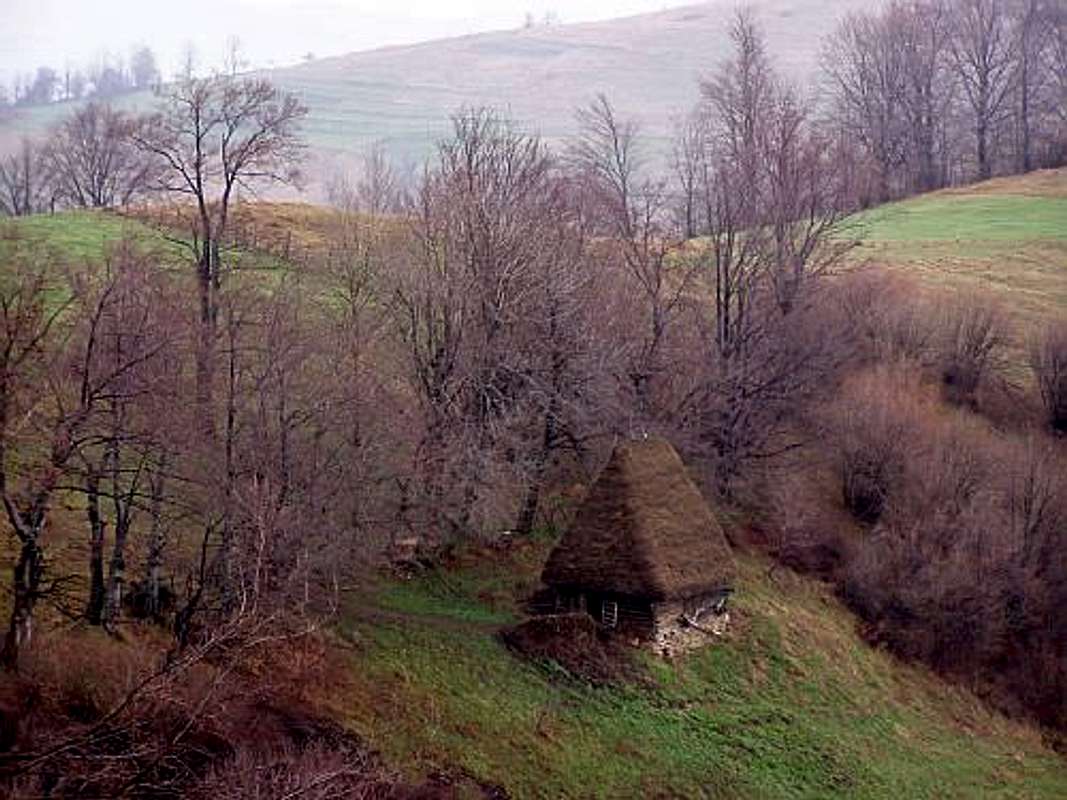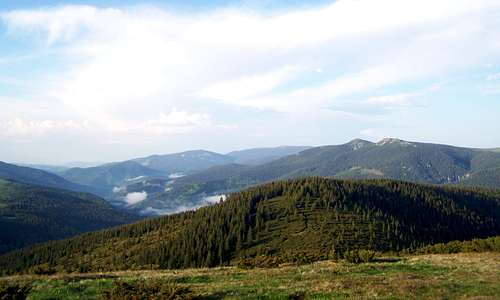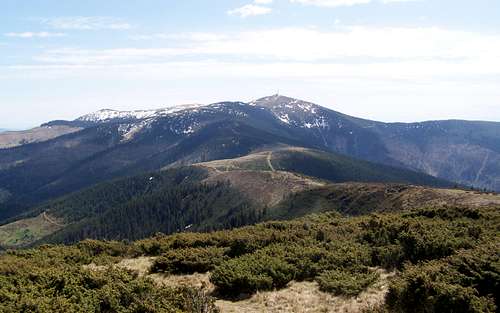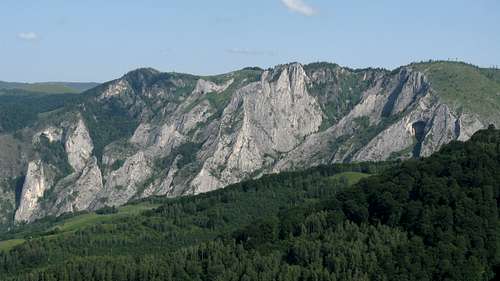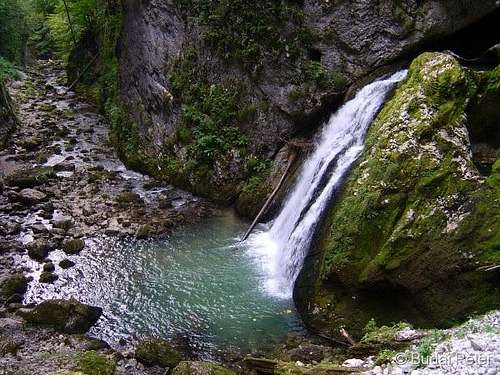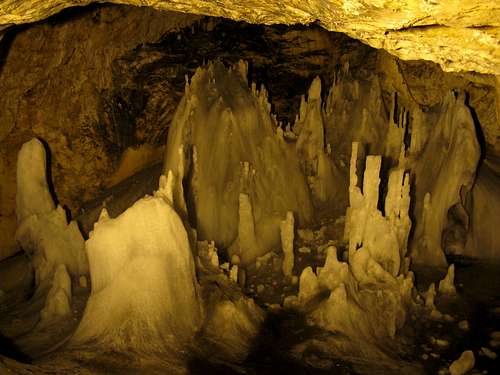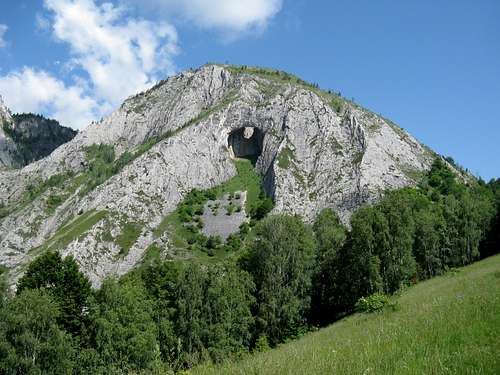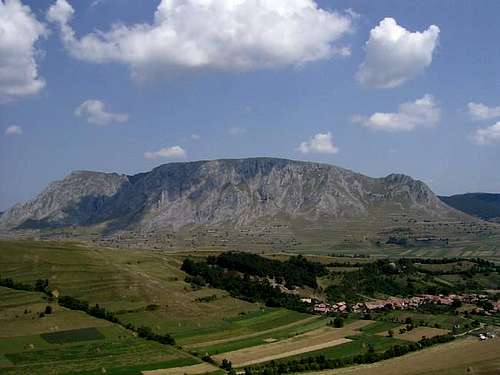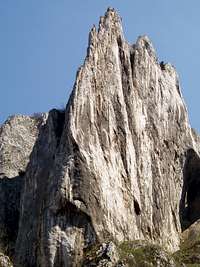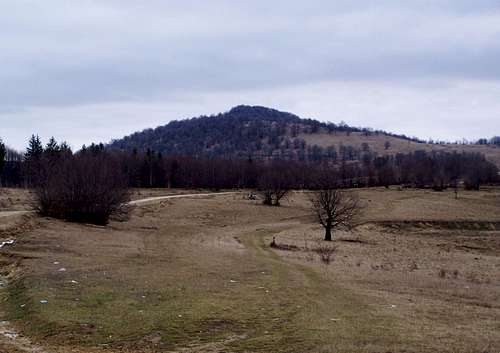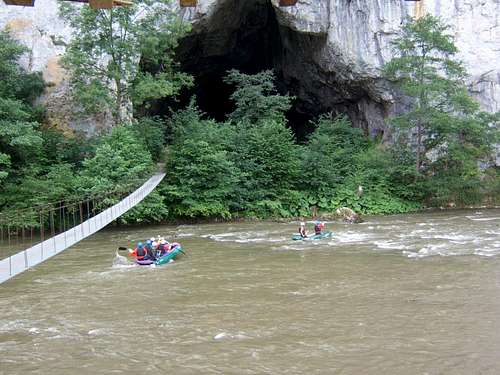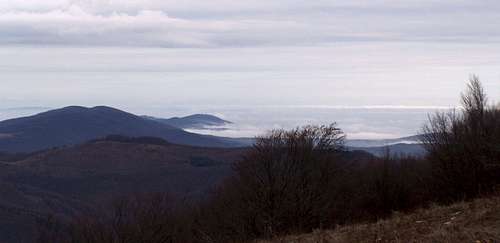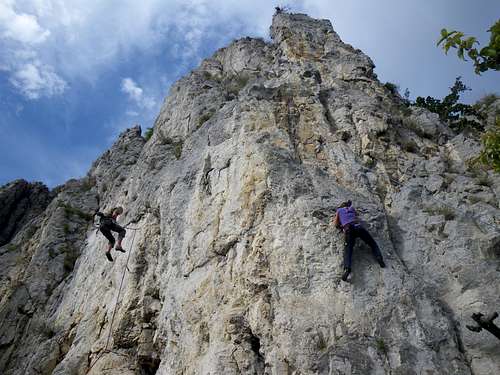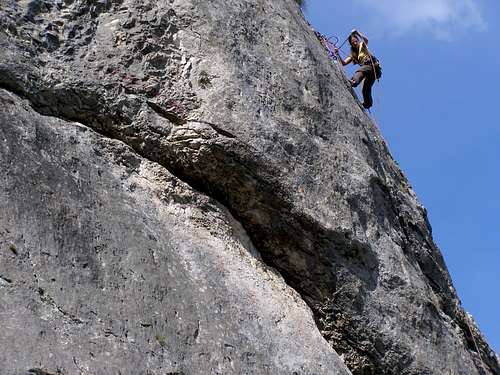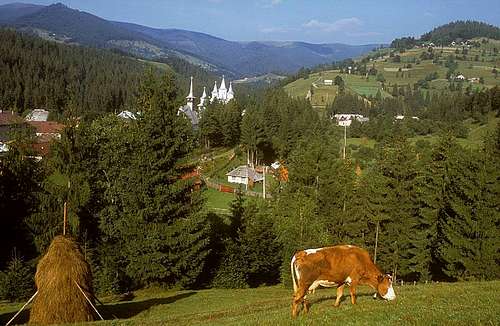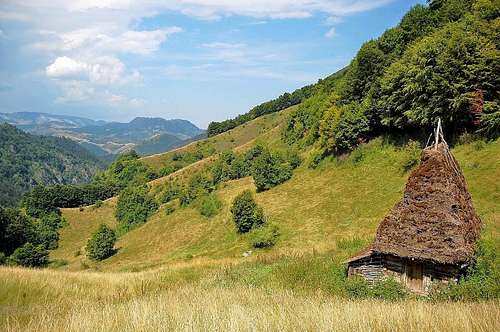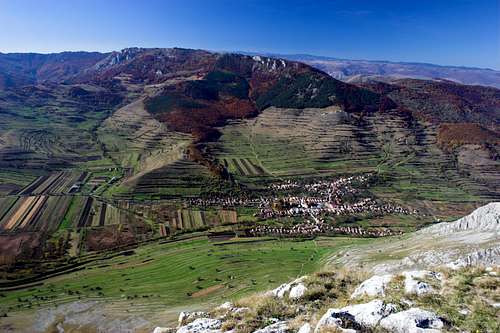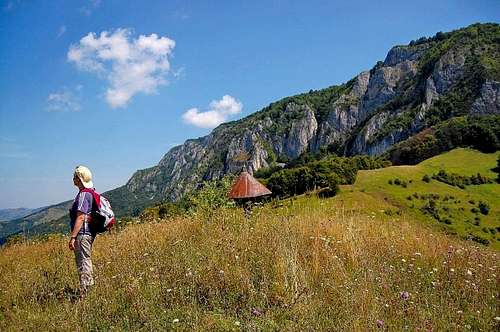-
 20756 Hits
20756 Hits
-
 88.19% Score
88.19% Score
-
 26 Votes
26 Votes
|
|
Area/Range |
|---|---|
|
|
46.44117°N / 22.68986°E |
|
|
Hiking, Trad Climbing, Sport Climbing, Toprope, Scrambling, Skiing |
|
|
Spring, Summer, Fall, Winter |
|
|
6066 ft / 1849 m |
|
|
Overview

Between the vast plains of Pannonia to the west and the basin of Transylvania (Land beyond the Forest, coined in the Middle Ages) sits a remarkable bulk of medium-height mountains nearing 1850m a.s.l. in elevation. In shape, this mountain group resembles the palm of a hand approximately a hundred kilometers across, spreading its five fingers ("Western Hills") westerly and northerly. Romanian people call it Munţii Apuseni, which means the Western Mountains or the Mountains of the Setting Sun. Hungarian people used to call them the Island Mountains of East Hungary, but today refer to them as Erdélyi-szigethegység, i.e. the Island Mountains of Transylvania. Among the other - surely confusing - names for these mountains are: the Western Carpathians (for Slovaks, Poles and Czechs this stands for what we - on SP - call the Northwestern Carpathians) and the Bihor Mountains (this is the name of the highest subgroup). On the south, the Western Transylvanian Mountains are bounded by the the valley of the Mureş/Maros River (and the Southern Carpathians beyond it). To the north, the Western Transylvanian Mountains extend as far as the Someş/Szamos River. The location of the mountains against the Carpathian arc as well as the map showing their breakdown into particular mountain groups can be studied here. |
High Central Massifs
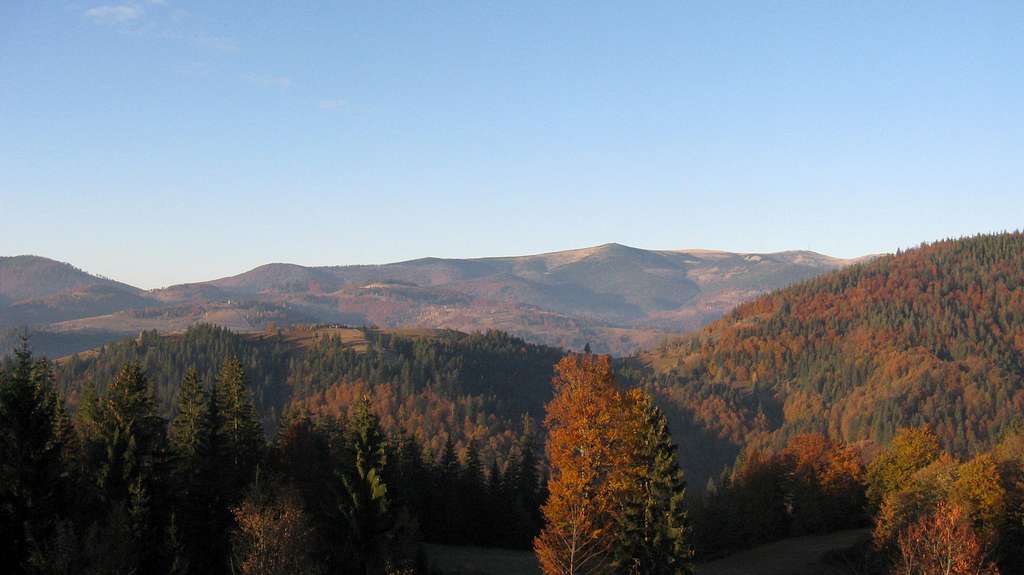
The highest mountains rise in the central part of Munţii Apuseni/Erdélyi-szigethegység. This heart of the Western Transylvanian Mountains can be divided into three major mountain groups, whose highest summits exceed 1800m in elevation: the Vlădeasa/Vlegyásza in the north, the Bihor/Bihar in the south and the Gilău/Gyalu in the east.
These mountains - composed of crystalline rocks - feature long, gentle slopes and rounded tops. The scenery is a blend of coniferous forests and mountain pastures and is rather monotonous, despite being charming. A rather small - compared to other Carpathian ranges - number of big predators, such as the bear, wolf and lynx live there.
Between the three major crystalline massifs stretches a limestone plateau named Padis (Padiş/Pádis), packed with the classic forms of karst relief and usually classified as part of the Bihor Mountains. The karst landscapes extend northward into the Vladeasa Mountains and easterly along the Arieş/Aranyos River as far as the Turda Gorge (Cheile Turzii/Tordai-hasadék) on the outskirts of the Transylvanian Basin. But the karst west of the historic town of Turda/Torda - despite being located north of the Aries River - is traditionally believed to be part of the Trascău/Torockó Mountains.
|
Gorges & Crags of the South-East
|
Between the middle course of the Maros River and the Aries/Aranyos, its tributary which rises in the heart of the Western Transylvanian Mountains, sits a mountainous land whose main features are limestone gorges and crags in the east and rich deposits of metals, including gold, toward the west.
|
Western Hills
|
In the west and north-west, the central massifs are surrounded by several groups of low mountains whose geological composition does not differ much from that of the higher ranges of the Western Transylvanian Mountains: mostly old crystalline rocks and several large areas of Mesozoic limestone; of the latter the Royal Forest stands out, looking like a lower version of the Padis Plateau.
|
Rock Climbing
|
Rock climbing in the Western Transylvanian Mountains is all about limestone. The major climbing areas are located in the South-East, especially in the gorges of the Trascau Mountains, of which the Turda Gorge is a mecca for the Transylvanian rock climbers. In the Ore Mountains, the gorge of Crăciuneşti/Krecsunesd lures most of the climbers. |
Historic Landscapes
|
To understand the man-made features of Transylvania's landscapes, especially the architecture of its towns and villages sitting at lower elevations, including the outskirts of the Western Transylvanian Mountains, one has to to bear in mind that for about a thousand years - from the 10th century A.D. up to the 1st World War - the country was multinational as well as being either the east part of the kingdom of Hungary or a principality ruled by Hungarian princes. But the people who built Transylvania's greatest towns were the "Saxon" settlers who came from the overpopulated lands which are today western Germany. While the Hungarians, Hungarian-speaking Szeklers and Saxons thrived in the lower lying areas and the towns, most of the mountains and rural areas were populated by Romanian people (then called Vlachs). They assimilated the remainders of the older settlers, such as Slavs. In ethnographic terms, the heart of Munţii Apuseni/Erdélyi-szigethegység is the homeland of a distinct group of highlanders known as the Moţi people.

|
Getting There
Nearest airports:

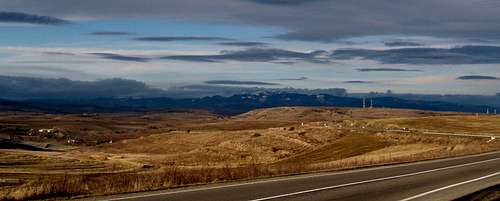
By road:
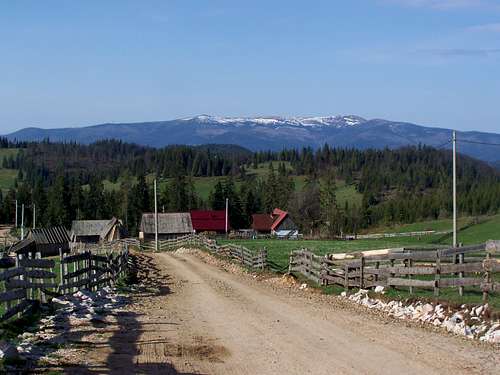
|
Weather
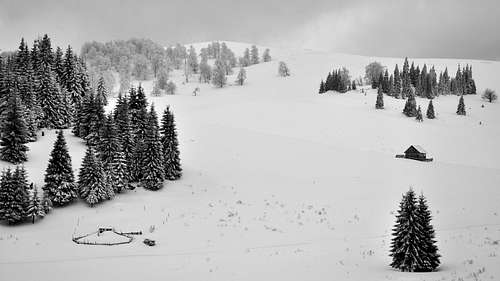
- Vlădeasa summit
- Arieșeni (AccuWeather)
- Turda (AccuWeather)
Maps & Guidebooks
- Paper maps by Dimap
- Paper maps by Muntii Nostri
- Climbing guidebook Romania by Dimension Vertical (Gerald Krug)
- Travel Guide to Transylvania by Lucy Mallows
Red Tape, Camping, Accommodation
| There is virtually no red tape except for the area of the Apuseni Nature Park and the few other nature reserves. One's own tent and sleeping bag is the perfect solution. Also, there will be numerous cozy guesthouses like these as well as an occasional mountain hut in the most popular areas. |
Select External Links
- Bihor, Vlădeasa & Pădurea Craiului: photos, marked trails, interactive maps
- Interactive map - Hungarian names, lots of photos
- Photos on alpinet.org - text in Romanian
- Transylvania's etnographic zones
